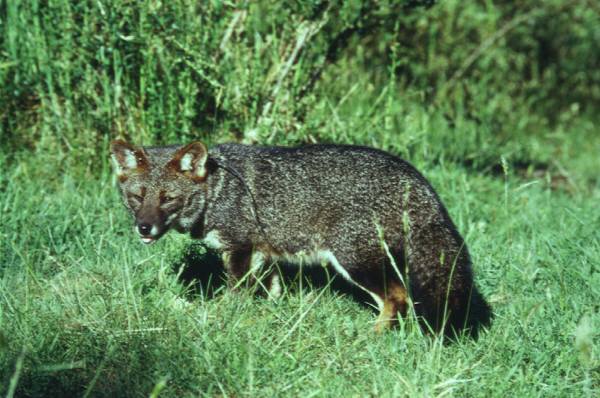
ResourcesSouthern Cone Working Group

Coordinator:
Eduardo Silva
Summary:
The Pseudalapex (Lycalopex) genus recognises six species, although there is some uncertainty as to the distinctiveness of Pseudalopex gymnocercus and P. griseus. The pampas fox, P. gymnocercus is found in southern Brazil, Paraguay, northern Argentina, Uruguay and eastern Bolivia. The culpeo, P. culpaeus is found in the Andes region from Ecuador to Patagonia. The Argentine gray fox or chilla, P. Griseus, is found in northern Chile, western Argentina and Patagonia. The Sechuran fox, P. Sechurae, is found in southwestern Ecuador and northwestern Peru. The hoary fox, P.vetulus is found in south-central Brazil (along with some sightings from the north of the country). Finally, the threatened Darwin’s fox, P. Fulvipes, is endemic to southern Chile, restricted to the forests of Chiloé Island, and a few patches of mainland coastal forest up to the Nahuelbuta National Park. With reduced ranges and knowledge often lacking, conservation of these species poses specific challenges which the Southern Cone Foxes Working Group is addressing.
What are the main issues in Pseudalopex conservation?
Although the quantity of information on the Critically Endangered Darwin's Fow (P. fulvipes) and its population is comparatively large, the conservation status of this species would require a constant monitoring of population trends, especially of its mainland population. Additionally, conservation actions, mainly based on awareness and community participation measures, should also be implemented.
Presently, the two least known Pseudalopex species are the Near Threatened P. sechurae and Least Concern P. vetulus. This lack of data added to their comparatively reduced distribution ranges and ecological niches make the understanding of their respective ecological requirements and population statuses a priority.
Finally, in the last years, a few preliminary studies have suggested that Pseudalopex gymnocercus and P. griseus should be pooled into a single species, or that their respective distribution ranges are very different from those traditionally reported. Because of its consequences for conservation and management planning, this issue would also deserve rapid attention.
What are the main issues the CSG should focus its efforts on in the near future to further the protection of these animals?
- Implement a permanent conservation programme for P. fulvipes
- Obtain information on the ecological requirements and conservation threats of both P. vetulus and P. sechurae
- Revise the taxonomy of the Pseudalopex group
- Improve our knowledge of the population dynamics of P. culpaeus, P. griseus, P. gymnocercus, especially in the areas where legal hunting and skin trade is permitted.

